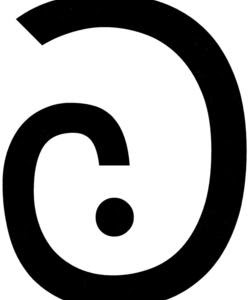 But according to photos by ABC News (see Afghanistan's Young Victims of Chemical Strikes), which shows American marines launching 120mm white phosphorous mortars at Taliban strongholds, the United States did indeed launch the attacks and hit civilians in what will undoubtedly be another friendly-fire incident that will permanently tarnish the reputation of the American military. (We also found a Reuters photo showing a white phosphorous attack over civilian populations.)
But according to photos by ABC News (see Afghanistan's Young Victims of Chemical Strikes), which shows American marines launching 120mm white phosphorous mortars at Taliban strongholds, the United States did indeed launch the attacks and hit civilians in what will undoubtedly be another friendly-fire incident that will permanently tarnish the reputation of the American military. (We also found a Reuters photo showing a white phosphorous attack over civilian populations.)Afghanistan's leading human rights organization said today it is investigating the possibility that white phosphorus was used in a U.S.-Taliban battle that killed 130+ Afghan civilians. The U.S. military rejected speculation it had used the weapon, insisting it was Taliban militants who did the deed, despite ABC News photos to the contrary.
 White phosphorus is a spontaneously flammable material that can cause painful chemical burns. It is used to mark targets, create smoke screens or as a weapon, and can be delivered by shells, flares or hand grenades.
White phosphorus is a spontaneously flammable material that can cause painful chemical burns. It is used to mark targets, create smoke screens or as a weapon, and can be delivered by shells, flares or hand grenades. White phosphorus can be employed legitimately in battle, but rights groups say its use over populated areas can indiscriminately burn civilians and constitutes a war crime. Launching it at a town occupied by both Taliban fighters and civilians would therefore constitute a war crime. Human rights groups denounce the use of white phosphorus for the severe burns it causes, though it is not banned by any treaty to which the United States is a signatory. It is however banned by numerous other countries.
Afghan doctors are concerned over what they are calling "unusual" burns on hundreds of Afghans wounded in last Monday's battle in Farah province, which President Hamid Karzai has said killed approx. 130 Afghan civilians. The incident in Farah drew the condemnation of President Karzai who called for an end to American airstrikes on civilian populations.
 This is not the first time the USA has used white phosphorus on civilian populations. The U.S. military used white phosphorus in the battle of Fallujah in Iraq in November 2004. Israel's military used it in January 2009 against Hamas targets in Gaza.
This is not the first time the USA has used white phosphorus on civilian populations. The U.S. military used white phosphorus in the battle of Fallujah in Iraq in November 2004. Israel's military used it in January 2009 against Hamas targets in Gaza.Colonel Greg Julian, the top U.S. military spokesman in Afghanistan, said the U.S. did not use white phosphorus as a weapon during last week's battle. The U.S. does use white phosphorous to illuminate the night sky, he said. (He apparently has not seen the ABC photos yet of American troops launching it during day hours.) Instead he suggested the chemical burns might be from exploding propane tanks, but didn't explain how exploding propane tanks could kill 130 civilians and burn hundreds of others.
 Yesterday a different U.S. military spokesman blamed Taliban militants for causing the deaths by using villagers as human shields. This suggests the U.S. is admitting to the attack with one spokesman and denying involvement with another.
Yesterday a different U.S. military spokesman blamed Taliban militants for causing the deaths by using villagers as human shields. This suggests the U.S. is admitting to the attack with one spokesman and denying involvement with another.Dr. Mohammad Aref Jalali, the head of the burn unit at the Herat Regional Hospital disagrees. "I think it's the result of a chemical used in a bomb, but I'm not sure what kind of chemical. But if it was a result of a burning house – from petrol or gas cylinders – that kind of burn would look different," he said.
"There has been other airstrikes in Farah in the past. We had injuries from those battles, but this is the first time we have seen such burns on the bodies. I'm not sure what kind of bomb it was," says Gul Ahmad Ayubi, the deputy head of Farah's health department.
 The current investigation coincides with another investigation into a March 14th incident in which an 8-year-old Afghan girl named Razia was burned by white phosphorus munitions in Kapisa province. Investigators are trying to determine whether U.S. troops attacked the little girl for "shits and giggles", and if so should disciplinary action be taken.
The current investigation coincides with another investigation into a March 14th incident in which an 8-year-old Afghan girl named Razia was burned by white phosphorus munitions in Kapisa province. Investigators are trying to determine whether U.S. troops attacked the little girl for "shits and giggles", and if so should disciplinary action be taken.An estimated 17 members of the Taliban were killed in last Monday's chemical attack, although this has not been confirmed.
Today Afghanistan called for the United States to come clean on the incidents.
















No comments:
Post a Comment
Comments containing links will be marked as spam and not approved. We moderate every comment. If you want to advertise on this blog it is $30 per link.